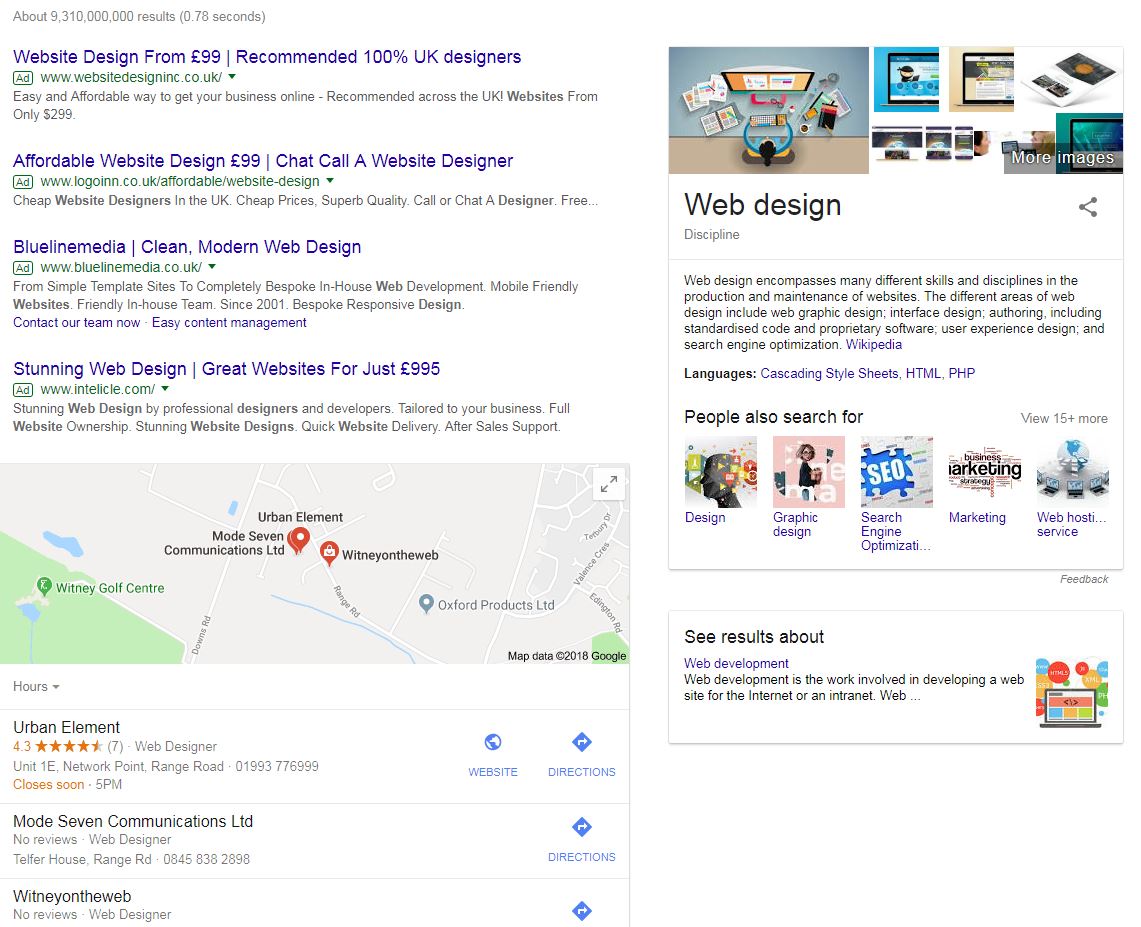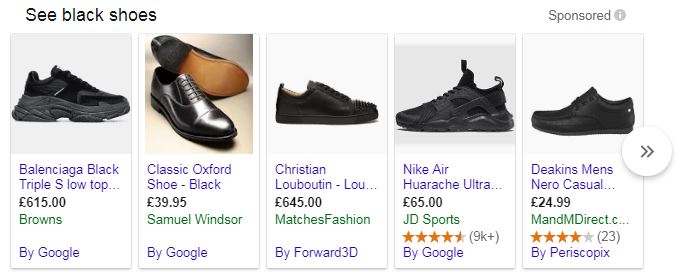Adapting to SERP Features on Google
27/11/2018 | Digital Marketing | 10 minutesIf you’ve visited this website via Google then you’re likely to be familiar with SERP (Search Engine Results Page) features. These are special elements that appear on Google when you search for particular things. For example, when you search for “web design” the SERP contains four ads, the local pack, a Wikipedia knowledge panel and the option to see more results about a related topic, in this case “web development”.

Paid SERP Features
Although paid media are not technically seen as SERP features, their presence does have an impact on the search landscape. Here’s a few of them;
- Google Search Ads look similar to the organic search results, appearing at the top and bottom of the SERP. They are acquired through setting up Google Ads and bidding on certain queries.
- Google Shopping Ads allow you to view product information such as prices and variations through the SERP before clicking through to a website.

Why has Google introduced these features?
Many of Google’s SERP features are designed to make things easier for users, such as instant answers and local pack directions, but Google’s main objective is clearly the money to be made from advertising. Advertising has always been a big part of Google’s business model, but they upped their game In 2016 when all paid ads were moved to the top of the SERP and ad icons were changed from yellow to green, making them look more like organic results.
Google search makes up 93% of the search engine market, they know that the ad dominated experience isn’t enough to deter their users from switching search engine. Many people use the phrase “google it” when talking about using a search engine, much like hoover and the vacuum cleaner, demonstrating how ingrained Google Search has become in our society.
How to optimise your website for SERP Features
Structured Data Markup (Schema.org)
One of the best starting points is to use Schema.org markup; a universal language understood by search engines. It is used by Google for their knowledge panel, reviews, news box and much more.
Google has a great guide on how you can markup your site to appear in their SERP features. They even have a structured data testing tool so that you can validate your code to ensure it can be understood.
Google My Business
To increase the relevance of search, Google serves up localised search results based on your location and the search query used. By setting up a Google My Business account you can make sure that your business appears in the local pack, Google maps and more local search features.
Google Ads
If you’ve got the budget to compete in Google Ads then this can be a great way to get a guaranteed spot at the top of Google. These need to be professionally managed or you could end up burning your budget on keywords that won’t get you ROI.
If you need any help getting your site into the SERP features discussed then Urban Element can help. We’ve helped many businesses get into crucial positions at the top of the SERPs with both paid and free SERP features.


